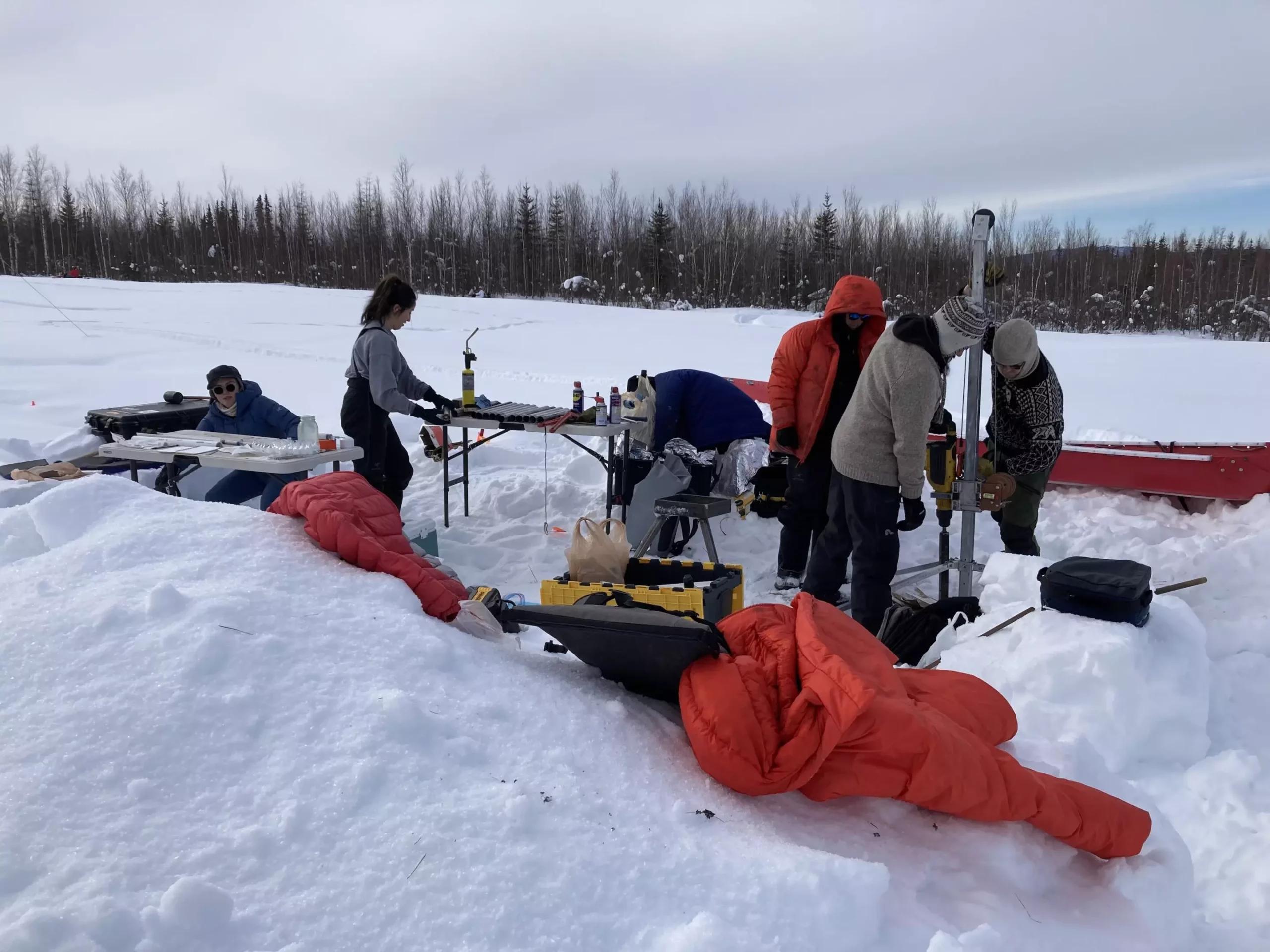When Katey Walter Anthony, a prominent limnologist and research professor at the Institute of Northern Engineering at the University of Alaska Fairbanks, first heard whispers of methane gas lurking beneath the lawns of Fairbanks residents, she was skeptical. “I dismissed it for years, thinking of methane solely within the context of lakes,” Walter Anthony recalled. However, curiosity piqued when a local journalist sought her expertise regarding anomalous ground conditions at a nearby golf course. Upon investigation, an astonishing confirmation surfaced: the ground was releasing methane gas, which further ignited her curiosity. But this was merely the beginning of a startling exploration into an unexpected source of greenhouse gas emissions.
As Walter Anthony delved deeper into Fairbanks’ peculiar landscapes, she found methane not just within the manicured boundaries of the golf course, but emerging through the soil of the surrounding forests. The revelation was eye-opening; methane emissions were streaming from the ground, not confined to the wetlands typically associated with such releases. This prompted an urgent need to broaden the inquiry into the upland ecosystems of Alaska, leading to a comprehensive study funded by the National Science Foundation.
Walter Anthony and her team embarked on an extensive survey across Interior and Arctic Alaska, aiming to ascertain the significance of these methane emissions in dryland ecosystems. Their research, which was published in the esteemed journal *Nature Communications*, unveiled troubling findings: upland areas, particularly those bolstered with ancient carbon deposits, were emitting methane at rates comparable to, if not exceeding, traditional wetland sources. This revelation challenges the long-held perception of methane emissions and poses serious implications for our understanding of global climate dynamics.
The crux lies in the age of the carbon being released; the methane identified was thousands of years old. Walter Anthony emphasized the paradigm shift this represents in methane research. Unlike previous models that downplayed the role of upland areas as minor emitters or even potential sinks for methane, the study reveals an unsettling reality: significant methane emissions from dry, well-drained landscapes can seriously compromise climate models and predictions regarding the Arctic’s future.
Methane is a greenhouse gas far more potent than carbon dioxide, with a global warming potential 25 to 34 times greater over a century. The study underscores the looming danger of permafrost thaw, which has now expanded its scope to include significant methane contributions from upland ecosystems. Historically, scientists have linked methane emissions primarily with saturated soils typical of wetlands, where microbial activity favors the production of this gas. However, Walter Anthony’s findings shed light on an alarming twist: winter methane emissions from seemingly drier sites were, in fact, five times greater than emissions observed in northern wetlands.
This finding raised pivotal questions among researchers regarding the integrity of current climate models that fail to account for these dynamics. Walter Anthony dutifully collected data from over 1,200 locations across various dry upland forest and grassland regions over three years to ensure her observations transcended the initial anomalous findings at the golf course. Nearly all tested locations emitted methane, hinting at a far-reaching and potentially underestimated phenomenon.
The Role of Unique Geophysical Features
Central to the study’s findings are unique geological formations known as taliks, which harbor unfrozen pockets of soil that retain heat. These formations enable soil microbes to remain active throughout winter seasons, thus facilitating the decomposition processes that lead to elevated methane emissions. Walter Anthony highlighted the inconsistency in previous scientific focus solely on carbon dioxide emissions, overlooking the critical role methane might play from these talik-rich environments.
The research further indicated that specific areas with Pleistocene-era Yedoma deposits exhibited significantly heightened methane emissions. These deposits, comprising ancient carbon-rich silt, dominate the Arctic landscape even though they cover a mere 3% of the permafrost region, they hold a staggering 25% of the carbon stored within.
The ramifications of these findings are vast and alarming. As researchers project thermokarst mounds associated with these Yedoma deposits to expand considerably by the 22nd century amid rising temperatures, the potential for enhanced methane emissions becomes alarming. Walter Anthony’s observations underscore a new understanding of the permafrost carbon feedback loop, suggesting that the increases in greenhouse gas contributions may be far more substantial than previously assumed.
Walter Anthony concluded with a sobering reminder: every instance of upland Yedoma formation that creates a talik is poised to become a potent source of winter methane. The collective implications of these discoveries raise urgent questions for climate scientists and policymakers alike. While the Arctic’s landscapes may seem tranquil, they harbor a potent threat to global climate stability that can no longer be ignored.

